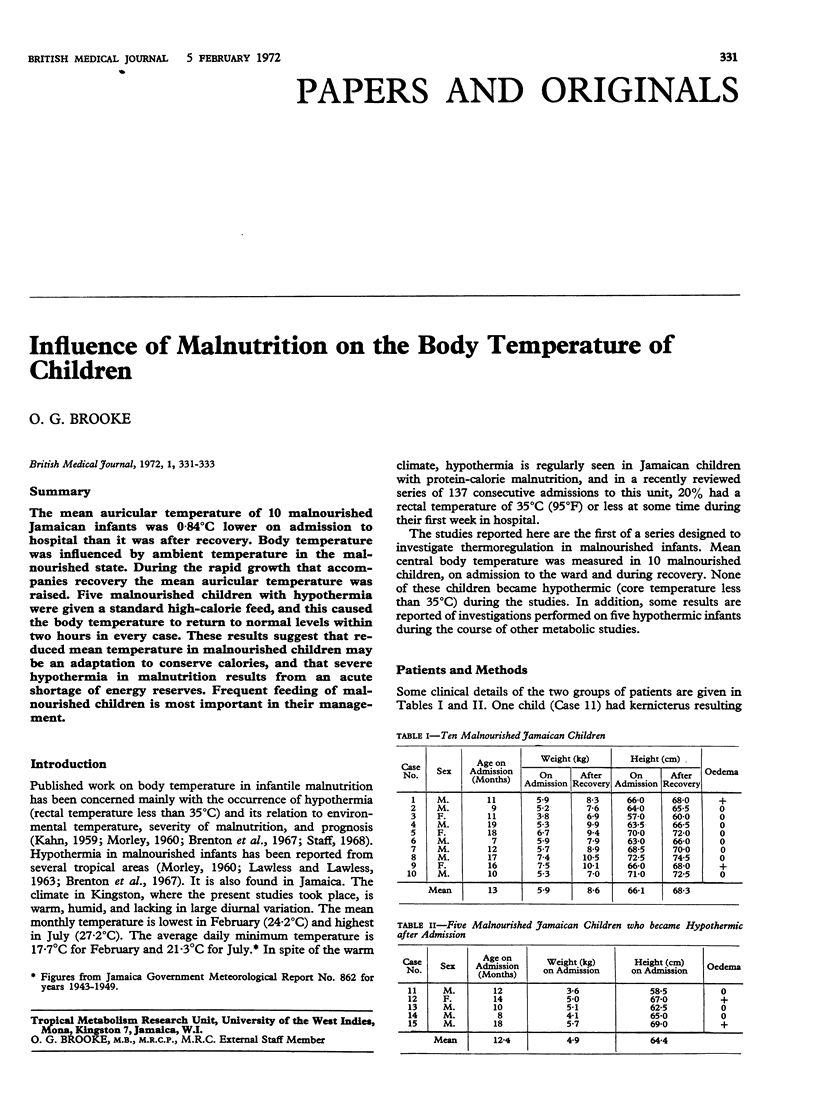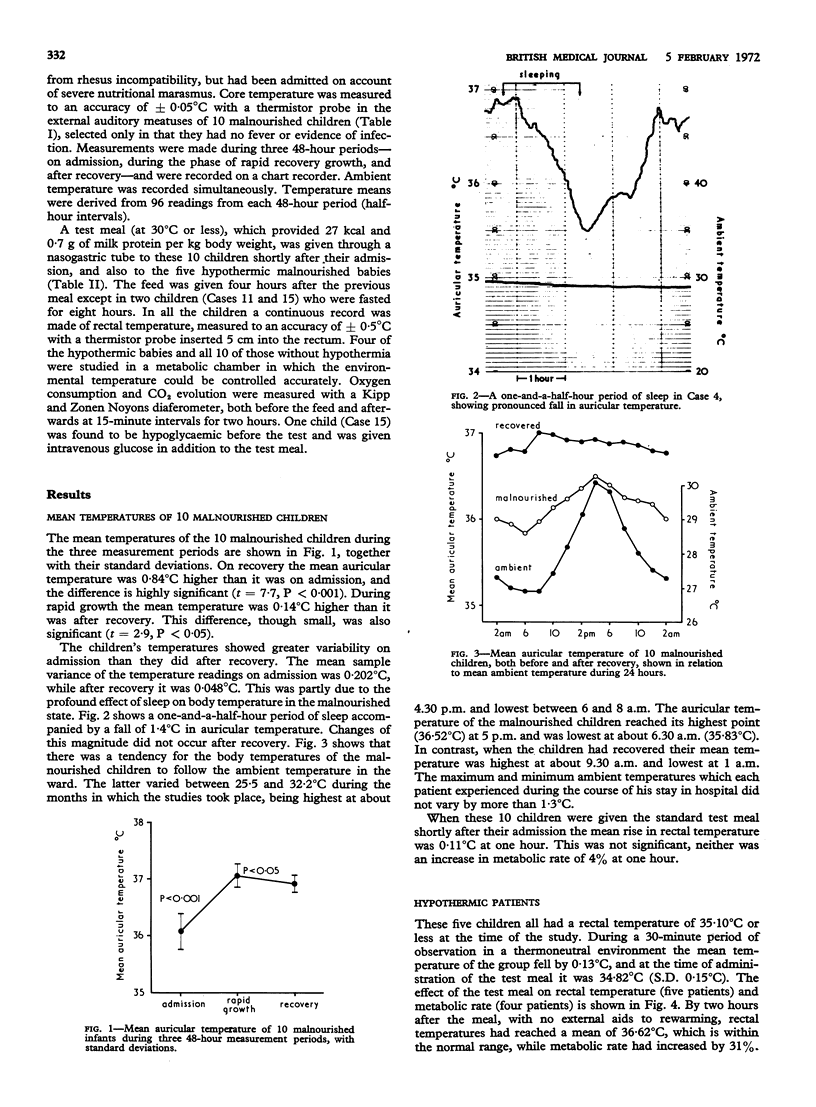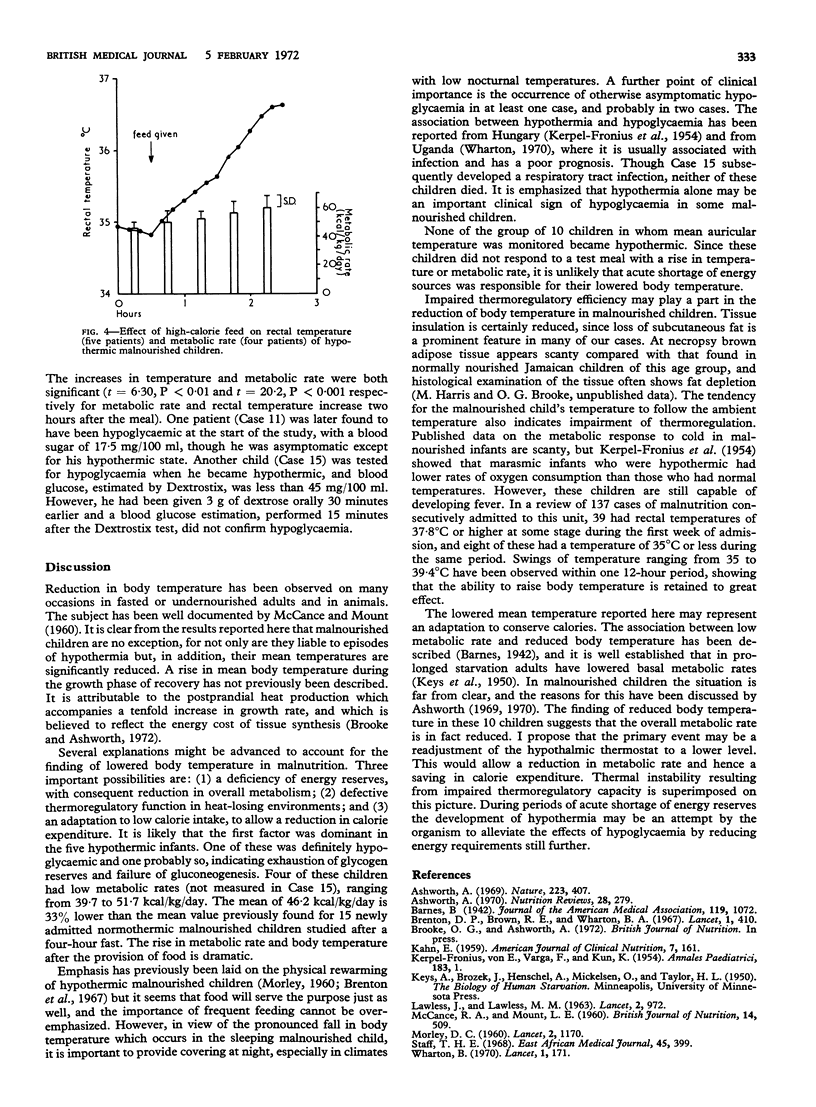Abstract
The mean auricular temperature of 10 malnourished Jamaican infants was 0·84°C lower on admission to hospital than it was after recovery. Body temperature was influenced by ambient temperature in the malnourished state. During the rapid growth that accompanies recovery the mean auricular temperature was raised. Five malnourished children with hypothermia were given a standard high-calorie feed, and this caused the body temperature to return to normal levels within two hours in every case. These results suggest that reduced mean temperature in malnourished children may be an adaptation to conserve calories, and that severe hypothermia in malnutrition results from an acute shortage of energy reserves. Frequent feeding of malnourished children is most important in their management.
Full text
PDF


Selected References
These references are in PubMed. This may not be the complete list of references from this article.
- Ashworth A. Malnutrition and metabolic rates. Nutr Rev. 1970 Nov;28(11):279–281. doi: 10.1111/j.1753-4887.1970.tb06160.x. [DOI] [PubMed] [Google Scholar]
- Ashworth A. Metabolic rates during recovery from protein-calorie malnutrition: the need for a new concept of specific dynamic action. Nature. 1969 Jul 26;223(5204):407–409. doi: 10.1038/223407a0. [DOI] [PubMed] [Google Scholar]
- Brenton D. P., Brown R. E., Wharton B. A. Hypothermia in kwashiorkor. Lancet. 1967 Feb 25;1(7487):410–413. doi: 10.1016/s0140-6736(67)91175-0. [DOI] [PubMed] [Google Scholar]
- KAHN E. Prognostic criteria of severe protein malnutrition. Am J Clin Nutr. 1959 Mar-Apr;7(2):161–165. doi: 10.1093/ajcn/7.2.161. [DOI] [PubMed] [Google Scholar]
- KERPEL-FRONIUS E., VARGA F., KUN K. Pathogenese der Dekomposition. II. Die Bedeutung der Anoxie, Hypothermie und Hypoglykaemie im Endzustand der Säuglingsatrophie. Ann Paediatr. 1954 Jul;183(1):1–28. [PubMed] [Google Scholar]
- MCCANCE R. A., MOUNT L. E. Severe undernutrition in growing and adult animals. 5. Metabolic rate and body temperature in the pig. Br J Nutr. 1960;14:509–518. doi: 10.1079/bjn19600064. [DOI] [PubMed] [Google Scholar]
- MORLEY D. C. Cold injury among children severely ill in the tropics. Lancet. 1960 Nov 26;2(7161):1170–1171. doi: 10.1016/s0140-6736(60)92358-8. [DOI] [PubMed] [Google Scholar]
- Staff T. H. Treatment of severe kwashiorkor and marasmus in hospital. East Afr Med J. 1968 Jun;45(6):399–406. [PubMed] [Google Scholar]
- Wharton B. Hypoglycaemia in children with kwashiorkor. Lancet. 1970 Jan 24;1(7639):171–173. doi: 10.1016/s0140-6736(70)90408-3. [DOI] [PubMed] [Google Scholar]


